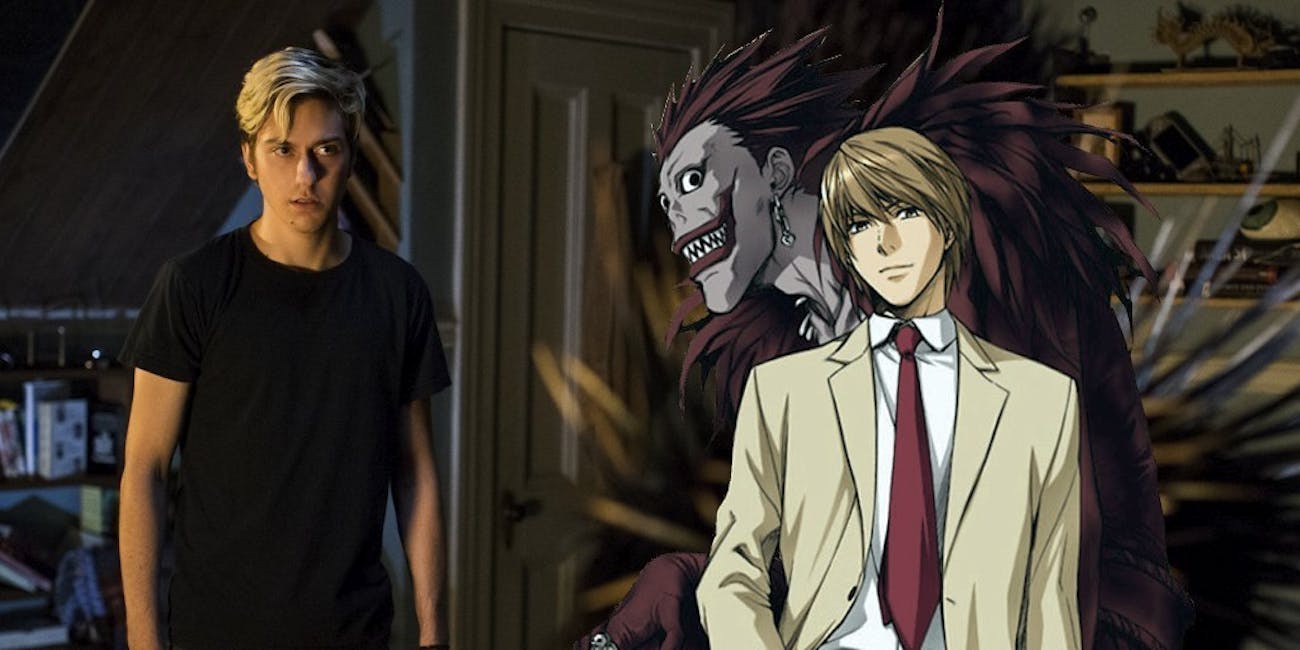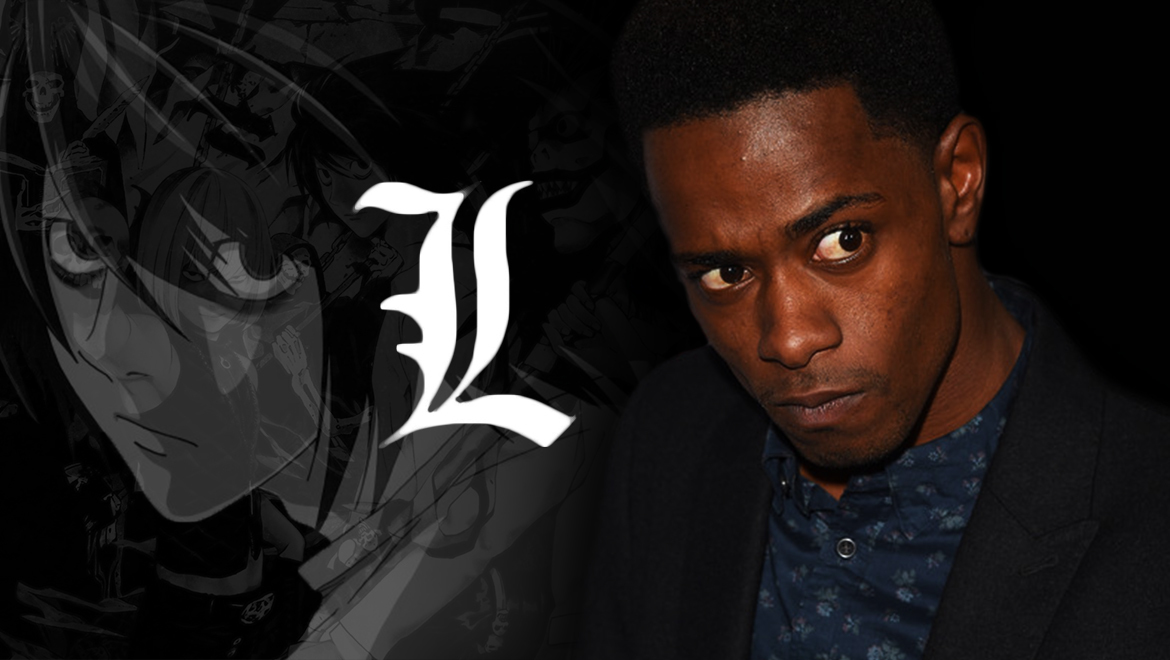Last time,
we discussed why Netflix’s adaptation of Death
Note was a disappointment, and could have been a lot better. In short, it
doesn’t quite swing for the fences with the manga, instead throwing out a good
majority of what made Death Note so
appealing, in favour of a dreary romance drama. The characters are profoundly
stupid, whiny, and spend more time flailing their hands than doing anything
with the titular Death Note. Though it did have some shred of interesting
ideas, the film didn’t commit to anything of merit. Now, in this follow up
entry, I shall be pitching a few ideas on how Death Note may have been improved.
For one, I
feel a property like this, which involves a long game of wits, moves, and
countermoves, may have worked better as a miniseries or a full out TV show.
While the film looked like it would tackle the duel of minds between Light and
L, it quickly abandons it, replaced by a semi-interesting but ultimately flawed
romance between two dumb teenagers.
It is
possible I am looking at it a little too unfairly as a fan of the anime, as it
does manage to pull off this cautionary tale of giving teenagers great power
but abusing it with little thought of the consequences. But, when you adapt a
movie after something of Death Note’s
calibre, the expectations are high.
Light and L
are both geniuses, often cool, calm, and collected in their moves against one
another. Perhaps the screenwriters thought how the two characters were
portrayed in the manga would not work well with the story they had in mind?
While Light Yagami decides to use the Death Note on a whim, quickly developing
his god complex, Light Turner has legit, personal reasons that tempt him to use
the book’s powers. His mother was murdered, the culprit getting off free. He
then defends Mia from a bully, but is reprimanded by the school principal for
doing homework for others, when Light is the victim here. Ryuk gives him the
opportunity to get justice, becoming Kira.
Kira’s
reputation in both versions of the story differ depending on the setting. In
Japan, Kira is viewed as a criminal by authorities, based upon the country’s
severe condemnation on criminals. In the Netflix film, set in Seattle, both
civilians and cops praise Kira’s judgement. This could symbolise America’s need
to police the world. In a montage, criminals implied to be from North Korea and
ISIS are seen being punished by Kira.
One of the
biggest problems with the film is that these characters are named Light and L,
two of the most compelling characters in manga. To completely alter them to
their core, to the point they no longer resemble the iconic characters they are
based on, is bound to put off any fan expecting a fair adaptation.
So, what if
instead of being Light Yagami and L, that these characters instead had been
original ones? Perhaps, otherwise, the reaction to these characters wouldn’t
have been so vicious. If I had written this movie (or TV series had it gone
that route), “Light Turner” and “L” would not be the same characters as seen in
the manga. Instead, Death Note would
have been set in the same universe as the manga/anime, but set years after
Kira’s reign of “justice”. Kira is gone, crime is on the rise, and there is no
sign of Kira’s second coming as some predict. The character who is Light Turner
could be renamed, but with the same story arc, and wham-bam-shalam, you have a
brand new character. Completely unrelated to Light Yagami, aside from deciding
to become the next Kira out of necessity.
L could
stay the same too, but instead be rewritten as a successor to the original L,
but struggles to keep his emotions in check, and live up to the reputation of
the world’s greatest detective. This would explain why this L makes erratic
decisions, is emotionally compromised, and does stupid things that the original
L would not do.
There, I
just rewrote the whole movie in two changes. Not-Light is a victim of
injustice, Ryuk tempts him to use the Death Note and become the next Kira.
New-L has become, well, the new L, and decides to stop Kira. Not-Light dates
Mia and they both double as Kira. New-L teams up with the Seattle police force
to identify Kira, but panics, and is convinced Not-Light is Kira, which turns
out to be true. New-L’s mentor Renamed Watari gets killed, Not-Light finds out
Mia is also using the Death Note, they fall out, New-L chases Not-Light, big
dramatic ferris wheel ending, Mia dies, Not-Light planned everything to work
out that way in advance, but his dad finds out he is Kira. The film ends on
that pesky cliffhanger with Not-L ready to use the Death Note to kill
Not-Light.
As for all
of the altered Death Note rules…perhaps the King of the Shinigami could’ve
altered the rules of the books? I’m grasping at straws here.
Another
change could be exploring the deeper philosophy and moral discussions of Death Note. How is the world reacting to
Kira and his powers of death and justice? In the manga/anime, the USA of all
people cave in to Kira’s power. How was Kira’s justice affecting normal
citizens morally and religiously? Are his actions good or evil in their eyes?
There’s that scene with the Kira-worshipping website where people list those
they feel deserve to die. While Mia is gung ho to start jotting down names,
Light suggests half of the people listed might be innocent. I wonder if Light
Yagami would consider such an option.
This
website scene opens up all sorts of questions about Light’s brand of justice.
Light Yagami just wrote down names of criminals who were reported on the news.
What if it turned out they were innocent/framed/set up/a fall guy, etc.? Would
Light write down a person’s name if they killed in self-defence? By accident?
What if say a criminal is repentant, or making amends for a past crime? Who
would Kira target? Would he take out ordinary criminals or people from across
the board like businessmen, religious figures, or, what if his own relatives
committed crimes? Who punishes Kira?
There’s
another can of worms. What happened if Light (or Not-Light) was arrested? How
would he survive in a trial or in jail? Would he be the number one whipping
boy, or treated as some sort of saviour behind bars? See, the possibilities are
virtually endless in Death Note.
The Death
Note itself has a lot of rules, some of which are a little ridiculous or
complicated. Many of these rules exist so the lore remains accurate, rigid, and
firm. Whoever has their name written in the book will die. There is not “get
out of death free burnable page” in the Japanese version, so either that
convenient plot twist would either stay or go. Perhaps the most interesting
rule is that up to six Death Notes can exist on Earth at the same time. Imagine
the mayhem that would unfold. What type of movie would that be like?
Turns out Japan
already did that movie. In one of the live action Japanese Death Note movies, Light Up
the World, six Death Notes are dropped on Earth by the Shinigami out of
amusement. This allows six different people to use the books very differently.
You have the wannabe successor to Kira, a serial killer, a Russian doctor who
kills terminally ill patients, a Japanese politician who murders Kira fans, a
New York banker who axes his rivals, and the next L, who refuses to use his
copy of the Death Note. Such a concept would be a real thrill to imagine as a
TV series, Hey, there’s a great idea for a sequel to the Netflix movie!


/cdn.vox-cdn.com/uploads/chorus_image/image/56348235/DN_Unit_02518_R_CROP.0.jpg)
